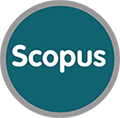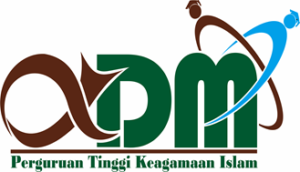Criteria for Publishing in Reputable International Journals: An Analytical Hierarchy Process Decision Model
Abstract
The problem faced by researchers, in this case lecturers at universities, after carrying out research and making research reports is deciding where to publish the results of their research. Analytic Hierarchy Process is an effective method for ranking alternative journals. This helps ensure that their research is published in a reputable journal that will reach the appropriate audience and have a positive impact on their career. The data collection method in this research was first sourced from books, the internet, and previously a study of articles and journals; secondly, create a checklist of criteria and sub-criteria from 20 (twenty) articles, namely 4 articles from Elsevier, 4 articles from Springer Nature, 4 articles from Taylor & Francis, 4 articles from Wiley-Blackwell, and 4 articles from Sage. Article selection was carried out randomly. The results of distributing questionnaires were analyzed using the Analytic Hierarchy Process Online System designed by Klaus D. Goepel. The main aim of this study was to determine the appropriate weighting of several criteria that explain why previously published manuscripts are submitted to their intended publication. The criteria for accepting article manuscripts in reputable international journals using the Analytical Hierarchy Process model (standard Analytic Hierarchy Process linear scale methods) is that the first priority is the "novelty" criterion with a weight of 0.502. The second priority is the "scientific" criterion with a weight of 0.201. Furthermore, the third and fourth priorities are "manuscript" and "content" respectively with weights of 0.142 and 0.078. Meanwhile, the last priority is "Interesting" with a weight of 0.076.
Keywords
Full Text:
PDFReferences
[1] M. Amado Mateus and F. Juarez Acosta, “Reputation in Higher Education: A Systematic Review,” Front Educ (Lausanne), vol. 7, Jun. 2022, doi: 10.3389/feduc.2022.925117.
[2] S. K. Gill, A. Dhir, G. Singh, and D. Vrontis, “Transformative Quality in Higher Education Institutions (HEIs): Conceptualisation, scale development and validation,” J Bus Res, vol. 138, pp. 275–286, Jan. 2022, doi: 10.1016/j.jbusres.2021.09.029.
[3] W. Wider et al., “Service quality (SERVQUAL) model in private higher education institutions: A bibliometric analysis of past, present, and future prospects,” Social Sciences & Humanities Open, vol. 9, p. 100805, 2024, doi: 10.1016/j.ssaho.2024.100805.
[4] R. Bahl and S. Bahl, “Publication pressure versus ethics, in research and publication,” Indian Journal of Community Medicine, vol. 46, no. 4, p. 584, 2021, doi: 10.4103/ijcm.IJCM_309_20.
[5] M. Šostar and V. Ristanović, “Assessment of Influencing Factors on Consumer Behavior Using the AHP Model,” Sustainability, vol. 15, no. 13, p. 10341, Jun. 2023, doi: 10.3390/su151310341.
[6] S. Duleba, Y. Çelikbilek, S. Moslem, and D. Esztergár-Kiss, “Application of grey analytic hierarchy process to estimate mode choice alternatives: A case study from Budapest,” Transp Res Interdiscip Perspect, vol. 13, p. 100560, Mar. 2022, doi: 10.1016/j.trip.2022.100560.
[7] G. Sonawane, G. S. Kadu, and Y. M. Borse, “Determinantal properties of Boolean graphs using recursive approach,” AKCE International Journal of Graphs and Combinatorics, vol. 21, no. 1, pp. 16–22, Jan. 2024, doi: 10.1080/09728600.2023.2240865.
[8] D. A. Zebari et al., “Systematic Review of Computing Approaches for Breast Cancer Detection Based Computer Aided Diagnosis Using Mammogram Images,” Applied Artificial Intelligence, vol. 35, no. 15, pp. 2157–2203, Dec. 2021, doi: 10.1080/08839514.2021.2001177.
[9] M. Ahsan, I. Hussain, and M. Ahmad, “A finite-difference and Haar wavelets hybrid collocation technique for non-linear inverse Cauchy problems,” Applied Mathematics in Science and Engineering, vol. 30, no. 1, pp. 121–140, Dec. 2022, doi: 10.1080/17415977.2022.2026350.
[10] P. Smith, “Black immigrants in the United States: Transraciolinguistic justice for imagined futures in a global metaverse,” Annu Rev Appl Linguist, vol. 42, pp. 109–118, Mar. 2022, doi: 10.1017/S0267190522000046.
[11] V. Guillén-Mena, F. Quesada-Molina, S. Astudillo-Cordero, M. Lema, and J. Ortiz-Fernández, “Lessons learned from a study based on the AHP method for the assessment of sustainability in neighborhoods,” MethodsX, vol. 11, p. 102440, Dec. 2023, doi: 10.1016/j.mex.2023.102440.
[12] J. P. Tennant and T. Ross-Hellauer, “The limitations to our understanding of peer review,” Res Integr Peer Rev, vol. 5, no. 1, p. 6, Dec. 2020, doi: 10.1186/s41073-020-00092-1.
[13] E. Canhasi-Kasemi and L. Vardari, “COMPARISON OF TWO DIFFERENT JUDGMENT SCALES WITH THE AHP GSM OPERATOR PREFERENCE OF UNIVERSITY STUDENTS,” International Journal of the Analytic Hierarchy Process, vol. 14, no. 3, Feb. 2023, doi: 10.13033/ijahp.v14i3.970.
[14] L.-A. Gacul et al., “GIS-Based Identification of Flood Risk Zone in a Rural Municipality Using Fuzzy Analytical Hierarchy Process (FAHP),” Revue Internationale de Géomatique, vol. 33, no. 1, pp. 295–320, 2024, doi: 10.32604/rig.2024.055085.
[15] C. Ozgur, “The analytic hierarchy process method to design applicable decision making for the effective removal of 2-MIB and geosmin in water sources,” Environmental Science and Pollution Research, vol. 31, no. 8, pp. 12431–12445, Jan. 2024, doi: 10.1007/s11356-024-31848-7.
[16] A. Wingard, “Journal Reputation and Journal Article Quality from the Perspective of Educational Researchers at a Swedish University,” 2022.
[17] Eungoo KANG and Hee-Joong HWANG, “The Importance of Anonymity and Confidentiality for Conducting Survey Research,” Journal of Research and Publication Ethics (연구윤리), vol. 4, no. 1, pp. 1–7, 2023, doi: https://doi.org/10.15722/jrpe.4.1.202303.1.
DOI: https://doi.org/10.18860/cauchy.v10i1.30903
Refbacks
- There are currently no refbacks.
Copyright (c) 2025 Ismail Husein, Ulrich Faigle, Achyar Zein

This work is licensed under a Creative Commons Attribution-ShareAlike 4.0 International License.
Editorial Office
Mathematics Department,
Universitas Islam Negeri Maulana Malik Ibrahim Malang
Gajayana Street 50 Malang, East Java, Indonesia 65144
Faximile (+62) 341 558933
e-mail: cauchy@uin-malang.ac.id

CAUCHY: Jurnal Matematika Murni dan Aplikasi is licensed under a Creative Commons Attribution-ShareAlike 4.0 International License.




-CAUCHY26.png)
